Kim Fay's Blog: Literate in L.A., page 3
July 14, 2009
My Life as a Fake
I missed being devoured whole by a book, and so on Saturday I decided to walk to the new Goodwill on Beverly and buy a book that would consume me. I put my trust in serendipity. I walked in, got distracted by the racks of jeans, and wasted time searching for old Levi’s for a while before making my way to the bookshelf. I scanned the volumes. Lovely Bones came as no surprise. When does it not show up in a thrift shop? Imagining Argentina did. What a powerful story. But I had already read it. I was distracted for a moment by the realization that Goodwill’s are where Reader’s Digest condensed books go to die.
Then I found, side by side, two editions of Peter Carey’s My Life as a Fake. A British version and an American version. I know of his books. I have always been meaning to read him, though I assumed it would be something more obvious, like Oscar and Lucinda or True History of the Kelly Gang. But these paired paperbacks seemed like a sign, especially since the book was about literary folly and Asia, two of my favorite subjects. I liked the cover of the British version better, but I didn’t like its paper and typeface. The American version had a slight tear in its back cover, but the paper felt nicer, and the type was bigger. I chose the American version.
Back outside, I walked to the post office, and to the library to return three of the partially read books. From there I headed up First toward Starbucks to get an iced green tea. I opened My Life as a Fake and read the first paragraph. I read the second. I read the third. Reading and walking in the dead heat of midday, passing in and out of the shade of the magnolia trees. It was one of those bluest of blue days when shadows feel like pools of cool water. I was beyond the noise of the main streets. I could hear the breeze in the palms high above as words like “territorial enthusiasm” drifted from the page.
It was the kind of book that leapt right in. Just what I needed. I read on until I hit Starbucks, and held my place with my thumb as I ordered my iced tea. The barista asked me what I was up to that day.
“Walking and reading,” I told him.
He considered this and seemed confused. He said, “Good thing you’re doing it in this neighborhood. You couldn’t do that in just any neighborhood in L.A.”
This was true, for more than one reason. I most likely wouldn’t get mugged here (although I have been mugged in a better neighborhood than this one), and the sidewalks were relatively smooth. Very little tripping as I read and walked. Past the New Beverly Cinema. Past the medieval crenellations of Lloyd Klein Couture, with its turtle pond out front. I marked my place again to take a moment to watch the turtles, necks arched, little pointed faces arched toward the sun. As I read about a prank involving a poet called Bruno Hat, I overheard two homeless men in a bus shelter discussing whether or not Michael Jackson had been abused as a child. I walked home, book in hand, took out the dog, book in hand, and then perched on the arm of my sofa, book in hand, still reading.
As I blow dried my hair, I wandered through Kampong Baru market. As I ate dinner, I listened to a man named Christopher Chubb try to convince the editor of a literary journal of the authenticity of a particular poem. I like hiding away from the world and reading for hours. I also like living while a book is living. Not just to be absorbed by it, but to live with it, as it lives, as I did as a child, cleaning my room with Little Women propped open, dirty socks and Jo’s dreams of being a great writer and chaotic school papers and Beth’s dying all one. As evening came, I was only a third of the way through My Life as a Fake, but I had plenty more to do before bedtime. I would water my plants, I would dust, and I would take the dog for another walk. Reading all the while.
May 24, 2009
City of Ghosts

I just got back from a month in Asia, a week of which I spent in Cambodia. My friend Janet and I traveled to the northeast, to Kratie, where I took off by myself around seven each morning for days spent bicycling along the Mekong River, past simple timber houses built on stilts, around an island filled with cows and haystacks, and up and down Kratie’s riverfront promenade at sunset. It was peaceful. It was beautiful. I could have stayed longer, until the ennui of small town life set in and I felt the urge to move on.
From Kratie we took an eight-hour bus ride to Phnom Penh, which I had been looking forward to visiting for ages. Not only because of a novel I was researching, but because I had been there in 1997, right after the Hun Sen coup that ousted the prime minister. During that first trip there was a tension simmering just beneath the surface. The coup was so fresh that some of the windows were still shot out at the airport when I arrived. But there was also a warmth that swam among the quiet, dusty city streets like sunlight in the current of a dark river. Phnom Penh felt in a state of limbo back then, the past not forgotten—nothing that terrible can be forgotten—but in the process of being let go, and the future still to come. Any future. That was the beauty of it. Coming back, I was excited to see the direction it had taken, envisioning a place in which ancient Khmer artistic traditions were revived and evident in daily life, the French architecture restored, and the mood one of conciliation among a resurrected population.
My heart broke. The city was dingy and aggressive, its streets clogged with cars and filthy exhaust fumes. Its energy was cheerless. I was only back for a few days, so I realize my experience was limited, but in that short time I saw three street fights and not a single person laughing. Not in a shop, not in a restaurant, not at a sidewalk street stall. I saw none of the modest promise that I remembered. The once beautiful waterfront had become just another backpackers’ free-for-all of happy hours, beggars and desperate motorcycle drivers. Protecting children from pedophiles is a national campaign. So many of the old French buildings looked as if they should be condemned. The only thing that felt cared for was the National Museum, full of Khmer art, and that was where I spent most of my days.
When I did wander the streets of Phnom Penh, I searched for a glimpse of people enjoying themselves but instead saw lethargic street vendors and a man in a suit get out of a Lexus SUV and pee on the wall across from the Royal Palace. Often, the movie City of Ghosts crossed my mind. I saw it when it came out in 2003. On the surface it is a basic thriller. Matt Dillon plays a front-man involved in a kind of Ponzi insurance scheme. When claims following a hurricane reveal the scam, the Feds come down on him, so he heads to Cambodia to find his boss, played by James Caan, who is trying to invest in a casino while hiding out from some angry Russians.
What I liked about the movie the first time I saw it was what a fine job Dillon, who also directed, did with the atmosphere. I had lived just across the border in Vietnam for four years, and I felt that he really got that part of the world, from the color of daylight at certain times of day to the flicker of fluorescent lights in a room at night to the faded elegance of the floor tiles to the people—he portrayed without parodying young Vietnamese women forced into prostitution, dazed pill-popping travelers, a beautiful do-gooder, a good-hearted but practical cyclo driver, and the French innkeeper played brilliantly by Gerard Depardieu, who wrests a knife from a man’s hand while balancing his half-Cambodian toddler on his hip. I also felt that Dillon captured a moment in time. The last days of the Wild West. But watching the movie after my recent trip, I saw it as a chronicle of why Cambodia has the odds stacked against it.
I’m not saying that Matt Dillon is a sage, but he certainly illustrated the players in a tragic path of least resistance. The corrupt but realistic Cambodian general who will always put himself and money before his country. The foreigner (Caan) who does not see himself as opportunistic or greedy, but rather practical in his own way as he shreds a country’s culture and belittles its dignity in pursuit of the big buck—most dangerously when it is disguised as "the name of progress." Mostly, though, Dillon caught the thoughtless violence that is bred by a legacy of thoughtless violence.
During my recent trip, my friend and I had dinner with a Cambodian man in his early twenties, charismatic, fluent in English, with every foreigner who has ever met him rooting for him to succeed. As the evening progressed and the small talk gave way to real conversation, we talked about whether the city is dangerous or not, and he said he didn’t think so before telling us how that when he and his friends caught a guy who had been robbing travelers, they bashed his head in with a rock. It was unclear whether or not the robber survived.
A country’s youth is its hope. Is this Cambodia’s hope? A child of Khmer Rouge survivors who spent his boyhood on the streets, begging and then selling newspapers. A young man who waits for his brother the tuk-tuk driver to get off work every night so that they can go home together—safety in numbers. He seemed to have little understanding of the brutality his parents must have suffered, but a very real—and nonchalant—street knowledge of the endowment that brutality had bequeathed. It is the nonchalance that concerns me.
Sitting there in a country in which an entire generation of thinking people had been eradicated, in a city that has its own killing fields, at a table with a polite young man who thought nothing of the vigilante punishment of another human being, I wondered what there was left to hope for. I hope that the young man finds the promise that lies within him. I hope that City of Ghosts becomes a time capsule. But mostly I hope that I am wrong and that the future—a generous, life-affirming future—is still to come to the sad faded streets of Phnom Penh.
March 6, 2009
For the times, they are a-changin'

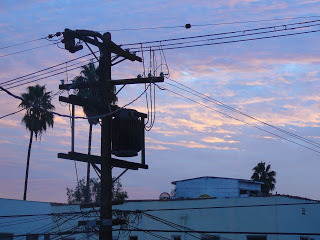
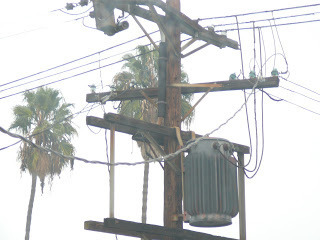
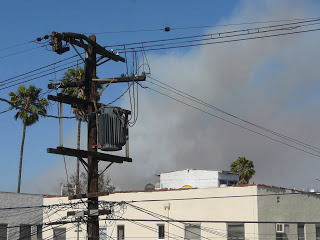
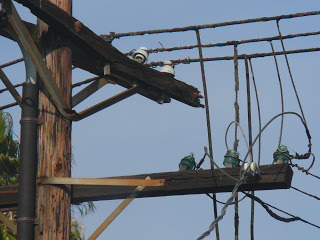
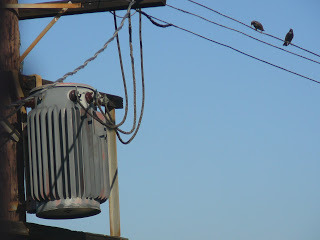


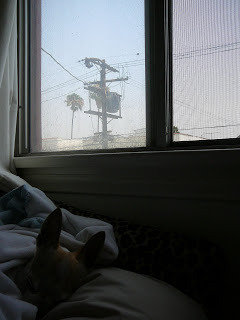
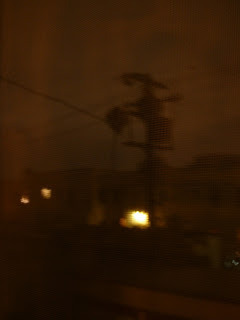
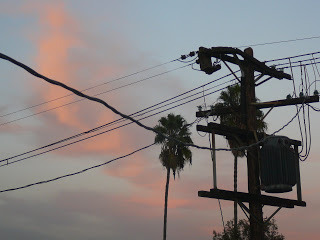

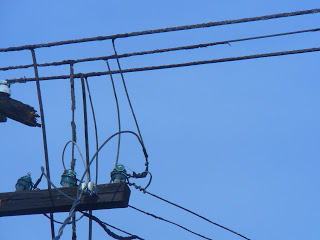


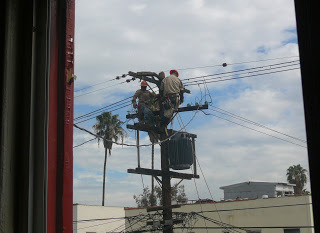


January 8, 2009
How the Library is Saving Me During the Economic Crisis
It’s not just that I lived with my nose in a book as a kid (Judy Blume and Nancy Drew, and Gone With the Wind, Jane Eyre, and Harlequin romances as a teen); or that I worked for six years at the Elliott Bay Book Company in Seattle after college; or that I still read at least ten different book reviews a week. I’ll read a dozen reviews of the same book, even if it’s one I’m not interested in, just because I can’t stand not being in the loop. I don’t waste money on shoes or booze or gadgets, but I have been known to go out and buy a book, just to have it in my possession. And then, never read it.
That said, I do read a lot. So between buying books I read and buying books I don’t, books consume a serious chunk of my income. This is especially hard on my wallet when I’m on a binge; when I pick up an author and can’t stop until I’ve read everything by that person. Over the years, I’ve done this with Graham Greene, Muriel Spark, Margaret Drabble, Mary Wesley, Honore de Balzac, Thomas Hardy, Nora Ephron, and so many others. Last year, though, when I suddenly got it into my head that I wanted to read Eve Babitz, I went to my local bookstores and couldn’t find anything in print. I mentioned this to my friend Janet, a fellow reading fiend, and she mentioned, to my surprise, the library.
I was forty-one, and it had been at least a decade since I’d checked a book out of the library. But the second she said that magic little word, “library,” a flood of happy images washed over me: all the libraries I had known in all the towns I had grown up in around Washington State, culminating with the library at Gaiser Junior High School in Vancouver, Washington. It was where I had volunteered to work during my free periods, and where I stole. Not books. I would never steal a book. But the pockets and cards put inside the front covers of library books. I took them home and glued them in the novels I had written, and made my sister check my masterpieces out from my library/bedroom.
The Gaiser Junior High library was unusual, a pit in the center of one of those 1970s experimental schools, where the classrooms circled the pit but had no walls, other than bookshelves for dividers. It was difficult to steal from there, but I did it, hands sweaty, heart pounding. Along with stealing, I spent hours scouring the shelves, reading every single one of those girls’ historical docu-novels with the reddish orange covers, and all of Betty Cavanagh, the first writer to ever respond to one of my letters.
With those fond memories in mind, I walked to the newly reopened Fairfax branch of the Los Angeles Public Library a few blocks away from my apartment. It is a gorgeous, Spanish mission-style building, with hardwood floors and plenty of wide desks for people to read or work on their computers. I got myself a library card and ordered Eve’s Hollywood; Slow Days, Fast Company; and Sex & Rage. Within a week, they arrived. I had them all read before the following week was out.
But my renewed love isn’t just about the library itself. It’s also about the physical books. When I buy a book at a bookstore, it is usually new. At the library, I always request the old first edition. The edition I would have read if I had bought the book right when it came out. The edition of Fear of Flying that I never could have bought because it was published in 1973, when I was eight. Even if I had been a precocious eight year old, which I was not, I think Isadora Wing’s views of life would have overwhelmed me. I take these books—smelling delicious as only old paper and ink can—back to my apartment, where I sit in the bright California sunlight. As I read the original edition, I try to put myself in the context of its era, imagining the shock, challenge, humor, sadness, outrage, or whatever other emotion the book evoked at the time of publication.
As this New Year came round, with all of America focused on the financial crisis, I decided that I should not purchase any books this year. The crisis hasn’t hit me hard. It’s more of a psychological challenge that has to do with the obsession this country has with acquisition. The second I made the decision to do this, I had a panic attack. So, I got onto my library’s website, and I ordered Jonathan Franzen’s The Corrections, Saul Bellow’s Herzog, Joyce Carol Oates’ Blonde and eight other books, some classic, some new.
I will bring them home. I will stack them up. I will look at them with satisfaction whenever I pass them by. I will read some. I will merely read the jackets of others. And I will be secure in knowing that although the world may shift this way and that, books are constant. Cutting back doesn’t have to mean giving up what I love best. Even if I don’t have a cent to my name, the library will always be there to keep my obsession fed.
March 28, 2008
Upton Sinclair’s Oil!
I was with my friend Janet, who found her treasure in a copy of Kathleen Norris’s Dakota: A Spiritual Geography . Wanting to contribute to the independent cause, I scanned the front table and saw a stack of Oil! , with its sinister-black movie cover linking it to There Will Be Blood. Having guiltily put off reading The Jungle for years, I suddenly felt that the time had come for Upton Sinclair. That night, while Janet slept in the twin bed across from me, in our $50-a-night, seventh-floor room in The Astoria overlooking the Chinatown Gate, I devoured the first fifty pages.
Usually, the terms “social commentary” and “page turner” don’t go hand in hand, but as Sinclair unfolds the story of Southern California oil discovery, oilmen, wildcatting, Wobblies, communists, and the Teapot Dome Scandal during the first quarter of the 1900s, he throws in a great story, which also includes movie stars, jazz, the subconscious mind, and even a nod to Aimee Semple McPherson, in the guise of a young preacher man. This is a first-rate potboiler, and at the same time a lesson in how in the heck we got into Iraq. Oil, greed, greed, and oil, with a little more oil and greed and lots of corruption thrown in for good measure.
Anchoring the book, Bunny grows from a teenager to a young man, struggling between his loyalty to his oilman dad, who has an intriguing, but ultimately dangerous, code of ethics, and the unfairly treated oil workers. He loves his father, and his father loves him, as is clear when he doesn’t chastise Bunny for getting involved with the enemy. It is this mutual love that creates much of the book’s tension, not between the two men, but between one man, Bunny, and his conscious. Every angle is worked, including the always fascinating trait of neutrality, which is—no big plot spoiler—never neutral in the end.
One of the great things about Oil!, as I mentioned about An American Tragedy, is how timely it feels (despite all the terrific period details). There is something very current about it, in the characters and the issues. Or perhaps that’s the bummer about it. Haven’t we learned any lessons yet? Apparently not, given the question posed in the last pages: Could a civilization endure on the basis of such purchase of government? Certainly the current US regime is answering that.
With a setting in Southern California, Oil! also returns relevance to the oil wells that pierce the land in this part of the country. Not those towers we’re used to seeing in movies about Texas, but the bobbing contraptions that look, ironically, like the skeletons of dinosaurs. They are atmospheric background, like palm trees, for anyone who lives here, taking the back road to LAX or driving around the South Bay. Having passed them for so many years, you are used to them, and even feel a fondness for them. If you are attached to that sentimentality, then I don’t suggest reading Oil! But if you’re aching for change, it’s a terrific substantiation of why this country so badly needs it.
If you’re up in San Francisco, make sure to support this shop:
Brower Books
2195 Fillmore St.
San Francisco, CA 94115
415-567-8027
Literate in L.A.
- Kim Fay's profile
- 406 followers



